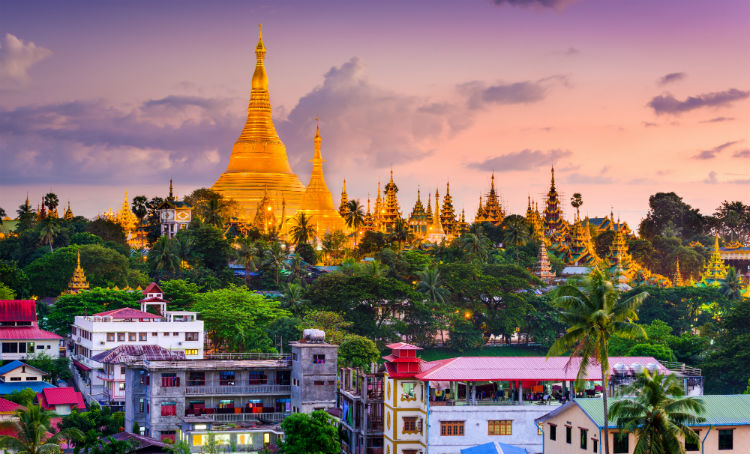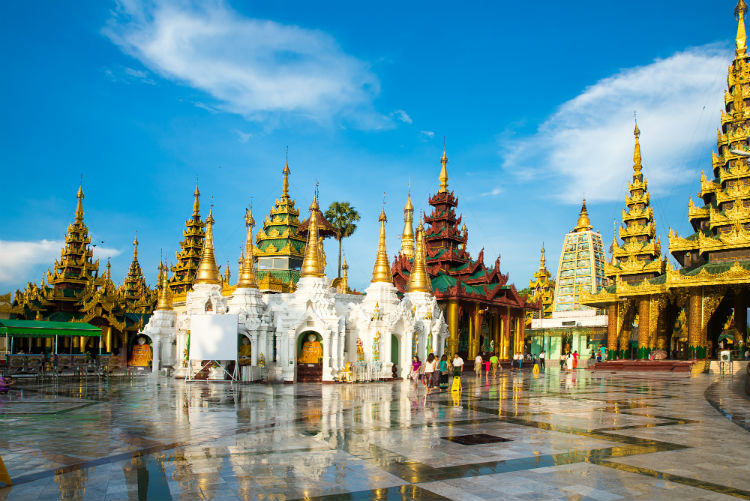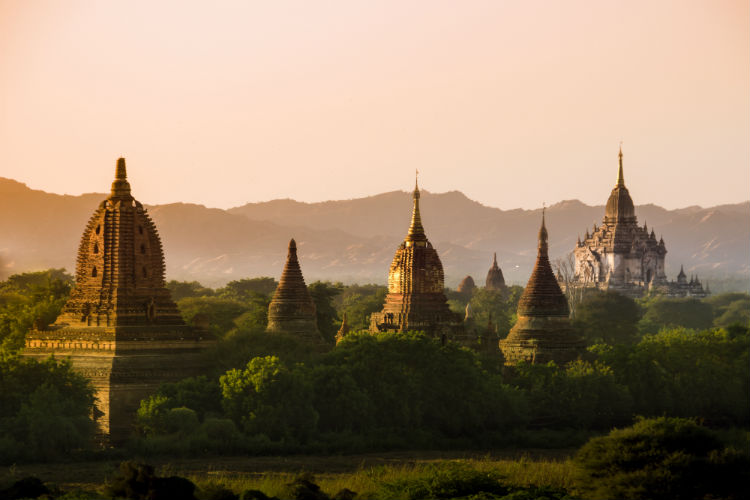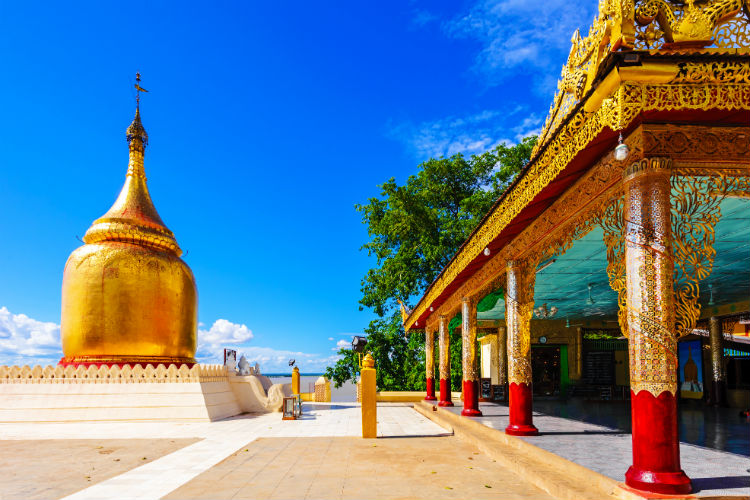If you want to travel somewhere off-track where not many people can say they’ve been, then we recommend Myanmar. Its borders only became open to tourists in 2012, having spent years untouched by the nuances of 21st Century life. If you want a taste of the true Orient, then the Fast East doesn’t offer a more authentic experience than Myanmar with its traditional tea houses, Buddhist temples and monks that are admired and respected like Hollywood royalty. Here’s our guide to exploring this beautiful and organic landscape.
Main tourist hubs

Madalay and Yangon are the two main hubs that attract tourists. Madalay is noted for its unrivalled collection of Buddhist temples (there’s 700 pagodas in the city) and being the home of world’s official book of Buddhism (it lies at the bottom of Mandalay Hill). Yangon on the other hand is a prime example of a 19th-century British colonial capital mixed in with Burmese, Chinese and Indian influences. There’s still a few places in the north of the country that are not yet open to tourists and it’s still recommended that foreign nationals don’t go wandering too far.
Accommodation

Myanmar is emerging as a popular destination for adventurous travellers, however Myanmar’s tourist infrastructure hasn’t quite caught up with demand. It’s highly recommended that all holidaymakers book their accommodation well in advance – this is not a country where you can rock up at the airport and take things as they come.
When to go

Myanmar is at its best between November and February, when it’s cool and dry. How warm it is will depend on what altitude you are at – the hills can get very chilly at night. It’s also a great idea to time your visit around a Full Moon so you can witness the street parades and festivities.
Cultural etiquette

Myanmar still has an old world charm about it, and many aspects of traditional Asian life are still upheld. Clothing wise men still opt for the skirt-like longyi, while woman wear the female equivalent htamein. Locals rarely expose their shoulders or knees, and travellers will probably get looks if they choose to reveal more skin than the locals. Remember to remove socks and shoes before entering a pagoda or monastery.
Money and Visas
Myanmar’s local currency is the kyat and US Dollars are accepted, though much of the country is trying to move towards its own local monetary system. Our recommendation is to bring US Dollars into the country and have them exchanged at the airport you land in. Make sure your dollars are crisp with no marks and don’t have the letters AB and CB at the start of the serial number, as the country has had issues with counterfeit money and could refuse your note on those grounds.

